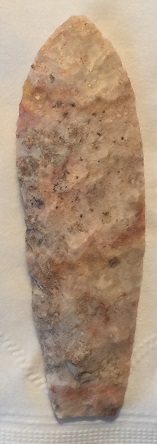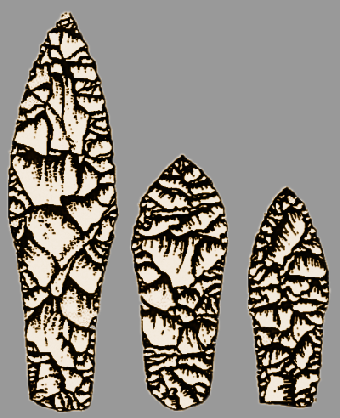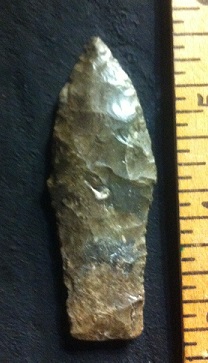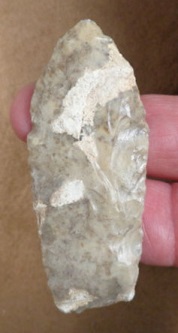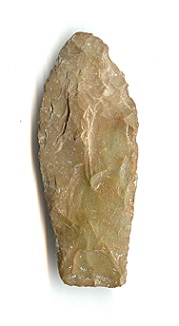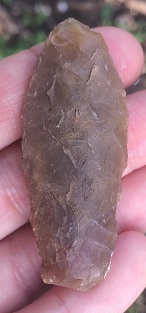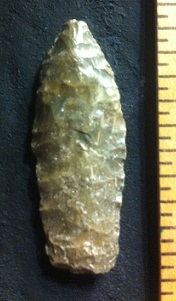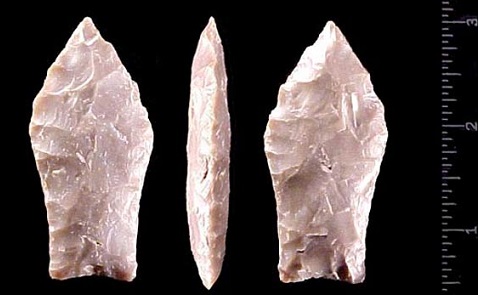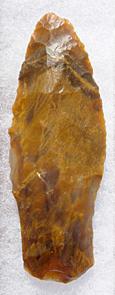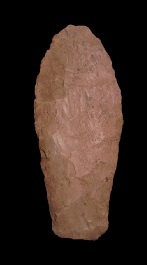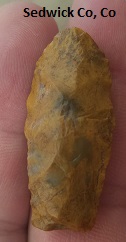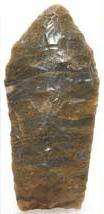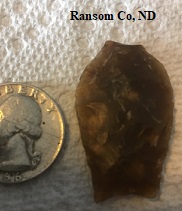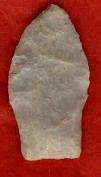Outline is Representative of Size and Shape:

Name Details:
Identified By: George A. Agogino
Named For: Type Site
Date Identified: 1961
Type Site: Hell Gap Site, Hell Gap Valley, Platte County, Wyoming
Identified By: George A. Agogino
Named For: Type Site
Date Identified: 1961
Type Site: Hell Gap Site, Hell Gap Valley, Platte County, Wyoming
Point Validity:
Valid type
Agogino was an anthropologist and was the founder and professor of the Department of Anthropology at the University of New Mexico. He was an expert on the Great Plains Paleo Indians. This type was named in a professional publication and has many professional references. This is considered a valid type.
Agogino was an anthropologist and was the founder and professor of the Department of Anthropology at the University of New Mexico. He was an expert on the Great Plains Paleo Indians. This type was named in a professional publication and has many professional references. This is considered a valid type.
Hell Gap Lanceolate
Cluster: Plano Lanceolate Cluster Description of Physical Characteristics and Flaking Pattern:
This is a medium to large lanceolate point with an elliptical cross section. The blade is primarily excurvate however, examples with weak shoulder may give the point a recurvate appearance. The widest part of the blade is just above the shoulders which is one half to one fourth of the length of the point (this ratio may very on reworked examples). The shoulders are weak to absent and at an upward slope. The stem is long and ranges from slightly contracting (most commonly) to straight. The base is primarily straight, but may vary from slightly concave to slightly convex. The lateral hafting edge is commonly heavily ground, but the basal edge may have light to absent grinding. This point is well thinned using percussion flaking with finishing pressure flaking forming a random to parallel or horizontal transverse.
Size Measurements:
Total Length - 40 to 130 (average 60 to 70 mm), Max Blade Width - 20 to 40 mm, Basal Width - 15 to 25 mm
Total Length - 40 to 130 (average 60 to 70 mm), Max Blade Width - 20 to 40 mm, Basal Width - 15 to 25 mm
Commonly Utilized Material:
A variety of local materials commonly using heat treatment.
A variety of local materials commonly using heat treatment.
Additional Comments:
This point is may be misidentified as a Agate Basin or a Angostura and those points may be misidentified for this type (Turner and Hester, 1985). Heavily re-sharpened Agate Basin and Angostura points may be hard to distinguish from a Hell Gap point (Boszhardt,2003).
Frison (1991) suggests that Hell Gap projectile point technology was a continuation of the Agate Basin technology.
The Madina point found in Ontario may represent an eastern distribution of this point.
In Iowa, Morrow (1984) has identified a smaller variation to the Hell Gap which he refers to as the Cherokee point.
This point is may be misidentified as a Agate Basin or a Angostura and those points may be misidentified for this type (Turner and Hester, 1985). Heavily re-sharpened Agate Basin and Angostura points may be hard to distinguish from a Hell Gap point (Boszhardt,2003).
Frison (1991) suggests that Hell Gap projectile point technology was a continuation of the Agate Basin technology.
The Madina point found in Ontario may represent an eastern distribution of this point.
In Iowa, Morrow (1984) has identified a smaller variation to the Hell Gap which he refers to as the Cherokee point.
Distribution: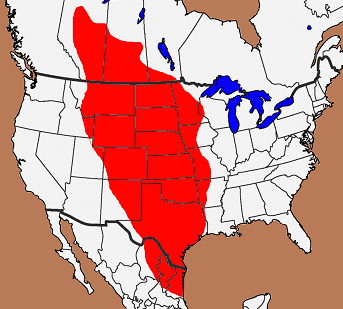

Distribution Comments:
This point is associated with the Plains regions of the United States and the Prairies of Canada. This point has bee reported into the eastern Rockies and the Colorado Plateau to the west and throughout the plains of Minnesota to the east. This point occurs with reduced frequency into the coastal regions of Texas and into Mexico.
This point is associated with the Plains regions of the United States and the Prairies of Canada. This point has bee reported into the eastern Rockies and the Colorado Plateau to the west and throughout the plains of Minnesota to the east. This point occurs with reduced frequency into the coastal regions of Texas and into Mexico.
Age / Periods:
Date: 10,0500 - 9,550 B.P.
Cultural Period: Transitional Paleo
Glacial Period: Late Pleistocene to Early Holocene
Culture:
Date: 10,0500 - 9,550 B.P.
Cultural Period: Transitional Paleo
Glacial Period: Late Pleistocene to Early Holocene
Culture:
Age Details:
According to Agogino (1985), Hell Gap postdates Agate Basin representing a transitional point between Paleoindian lanceolate and stemmed hafting technologies.
According to Agogino (1985), Hell Gap postdates Agate Basin representing a transitional point between Paleoindian lanceolate and stemmed hafting technologies.
Similar Points:
Agate Basin, Angostura, Bajada, Browns Valley, Burroughs, Escobas, Haskett Type I, Jay, Lake Mojave, Pelican, Pryor, Rio Grande
Agate Basin, Angostura, Bajada, Browns Valley, Burroughs, Escobas, Haskett Type I, Jay, Lake Mojave, Pelican, Pryor, Rio Grande
Other points in this cluster / Related / Associated Points:
Angostura, Browns Valley, Cherokee, Midland, Milnesand, Plainview
Angostura, Browns Valley, Cherokee, Midland, Milnesand, Plainview


